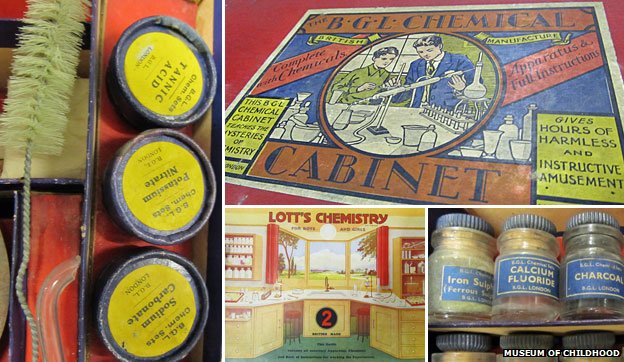
Many of us are nostalgic for the lost golden era of certifiably dangerous children's chemistry sets. Even if we weren't alive when that era occurred, we're still, sort of, vicariously nostalgic. At the BBC, Alex Hudson has a story about what was really in those misty colored chemistry sets that have lodged themselves into our cultural memory. Along the way, we learn that their demise was only partly to do with unfounded safety fears—some of the fears were founded, for instance, and in other cases, money and seemingly unrelated legal issues got in the way of fun.
By the 1920s and 30s children had access to substances which would raise eyebrows in today's more safety-conscious times. There were toxic ingredients in pesticides, as well as chemicals now used in bombs or considered likely to increase the risk of cancer. And most parents will not need to be told of the dangers of the sodium cyanide found in the interwar kits or the uranium dust present in the "nuclear" kits of the 1950s.Read the rest of this story at the BBC
Most will know cyanide as a deadly poison, but one of its main applications is in gold mining. It can make gold dissolve into water.
...Used often to test the presence of starch, the iodine solution once seen in kits is now regulated as a list I chemical in the US because of its use in the manufacture of methamphetamine. It can also be lethal if more than 2g of pure iodine is consumed.

No comments:
Post a Comment